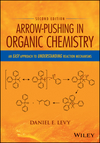Since my posting on personalized medicine (November 12, 2010), I had many discussions with my colleagues and peers regarding the true utility of genetic screening and the utility of biomarkers in establishing appropriate therapeutic regimens. While many agree with me regarding the promise of this approach, there are some dissenting opinions - most of which limit the reach of personalized medicine to cancer and bacterial infections. Regardless of opinion, a recent presentation by James Sabry (February 17, 2011 - www.growbold.com) would have been of great interest to all camps.
In his discussion, Sabry argued that the success rate for new drug approvals suffers, in part, from heterogeneous patient populations. Specifically, these patient populations include groups that are genetically pre-disposed to be non-responders. If we could screen out these non-responders from any clinical trial, drug response rates are likely to improve and more clinical endpoints will be met. The result, while relevant to smaller patient populations, will be better therapeutic agents. The key to all of this lies with the development of diagnostic tests for pre-screening patients prior to prescribing medications. In the cancer arena, Genentech is taking a lead position with the development of disease-specific antibodies tethered to chemotherapeutic agents. While, at present, this will not address all forms of cancer, I believe that this strategy is moving in the right direction.
The Rx/Dx Model - What it Means for Big Pharma
One of the challenges facing the pharmaceutical industry relates to the market potential of any given product. After all, the drug industry, like any other, is a money-making enterprise with financial responsibilities to investors. As such, the larger the market potential of a given product, the more attractive the program to large companies. To put this in another perspective, it is far easier for a company to earn one billion dollars per year from a single product than it is to earn the same amount from ten products with markets of one hundred million dollars per year. Aside from the reduced number of programs to manage, fewer dedicated personnel are required in areas such as sales/marketing, QA/QC and manufacturing.
In order to obtain blockbuster status, therapeutic agents must target the largest potential patient populations. However, these patient populations are heterogeneous and include various sub-populations - many of which will not respond. From an economic standpoint, this does not matter to business as long as the therapeutic does no harm. However, the waste associated with the money spent on products not benefiting patients is significant. Introduction of companion diagnostics, while beneficial to patients, will likely reduce the potential market size of therapeutic agents resulting in lower profits for drug companies. I FIRMLY BELIEVE THAT THIS SHOULD NOT BE A CONSIDERATION FOR DRUG COMPANIES! After all, if a patient will not respond to a given drug, that drug should not be sold to that patient. In further support of this assertion, Sabry, in his February 17 talk, argued that pharmaceuticals should only be paid for if they work. While such business models don't currently exist, there is a great deal of merit to this argument that can only result in better products.
Regarding the potential reduced markets for diagnostic-coupled therapeutics, this should not be a deterrent to the pharma industry. To the contrary, this paradigm has great potential. If diagnostics can differentiate large populations into smaller responsive populations, they can also define additional patient populations suffering from conditions with unmet medical needs. Furthermore, additional revenue will be realized from the diagnostics which, as a screening tool, will be used on all patients seeking treatment for ailments with established biomarkers. While the number of blockbuster drugs is likely to decline, the Rx/Dx paradigm is a potential gold mine of opportunities poised to improve the efficiency of drug discovery and the overall quality of healthcare to the general population.
Sunday, February 27, 2011
Subscribe to:
Post Comments (Atom)





Nice article, thanks for the information.
ReplyDeleteGenerally speaking, the jacketed glass reactor material may be from the sand, which may make machine sent back to the vibrating screen so as to be separated. Here: www.toption-china.com/products/glass-reactor-with-jacket-10l. In fact, the stone crushing machine is very popular in Africa, Middle East, India, South Asia, Sudan etc.
ReplyDelete